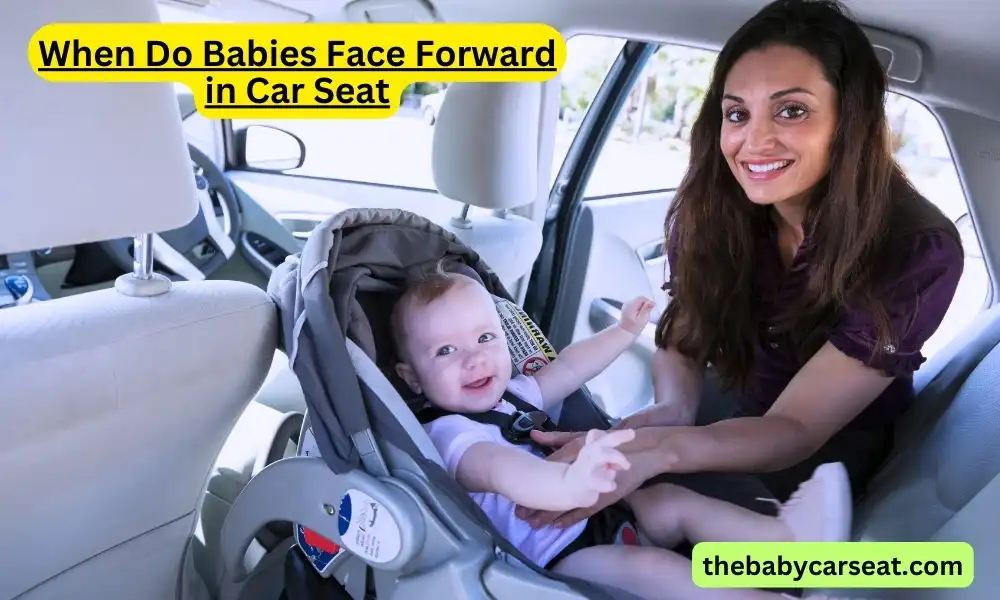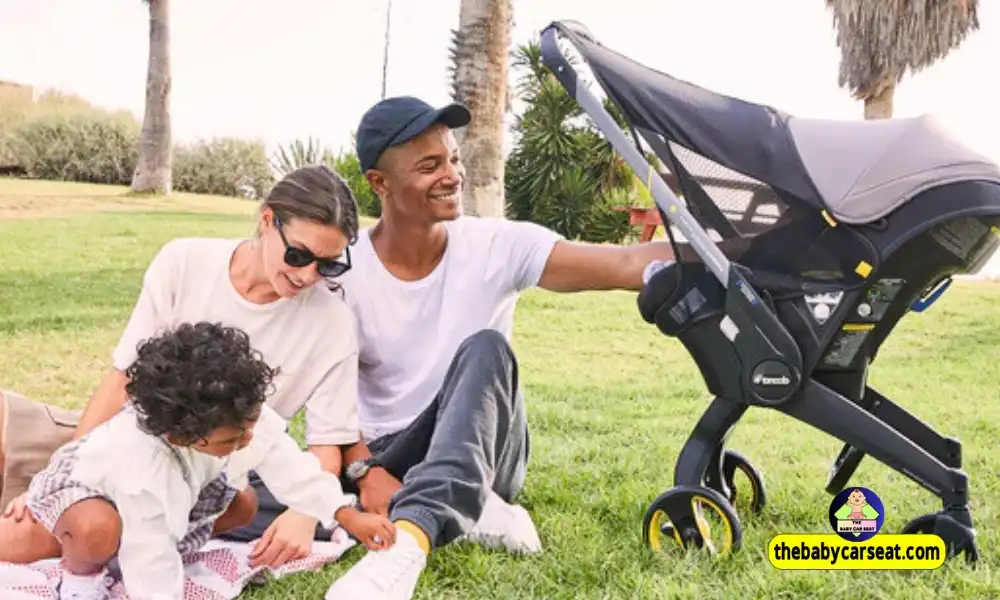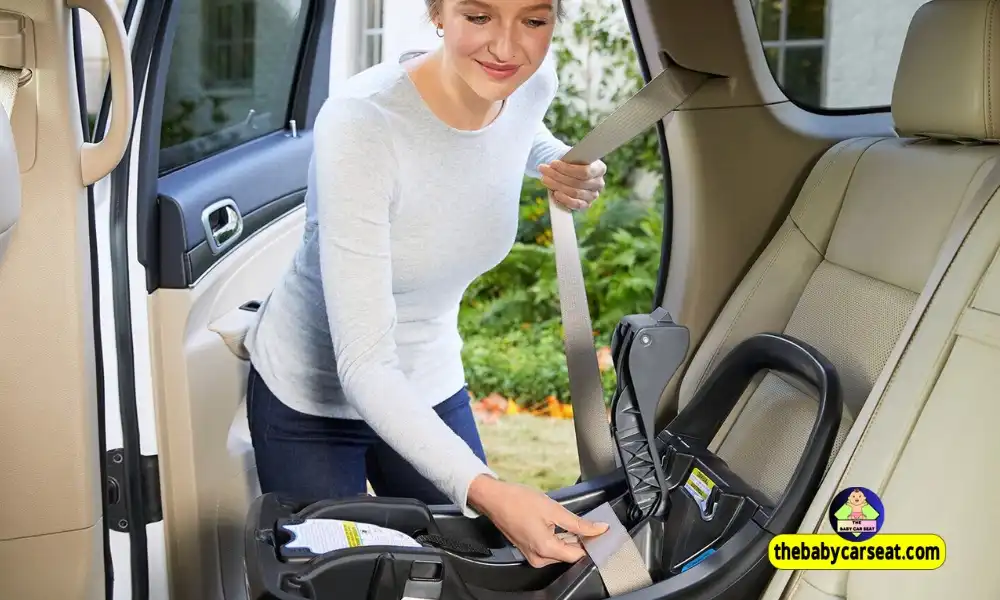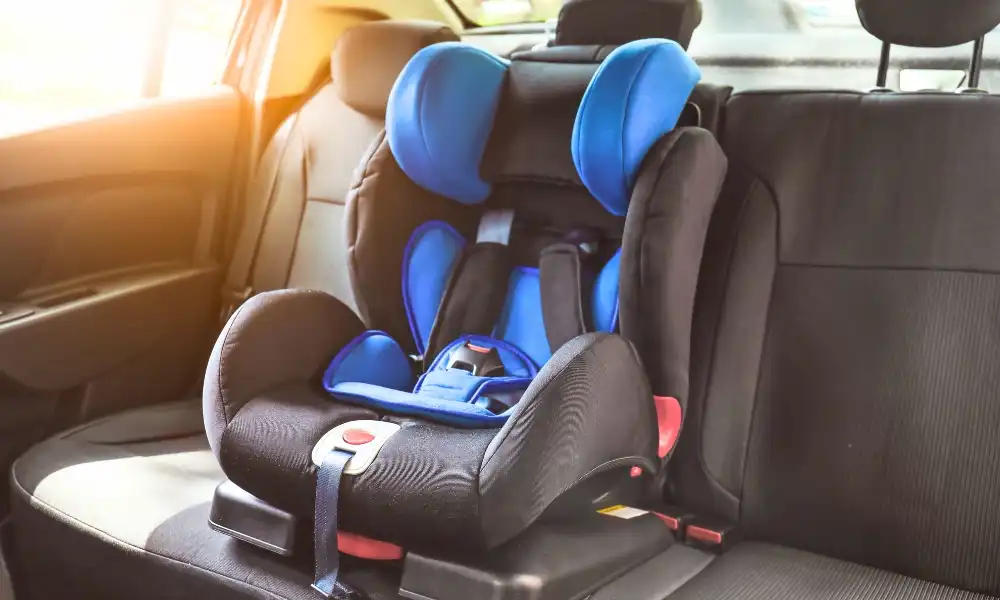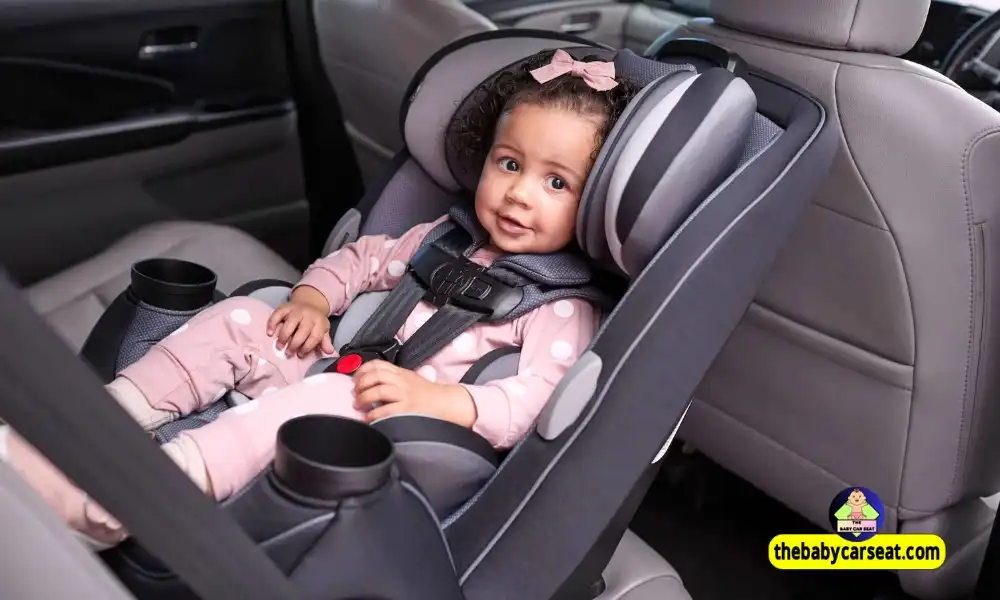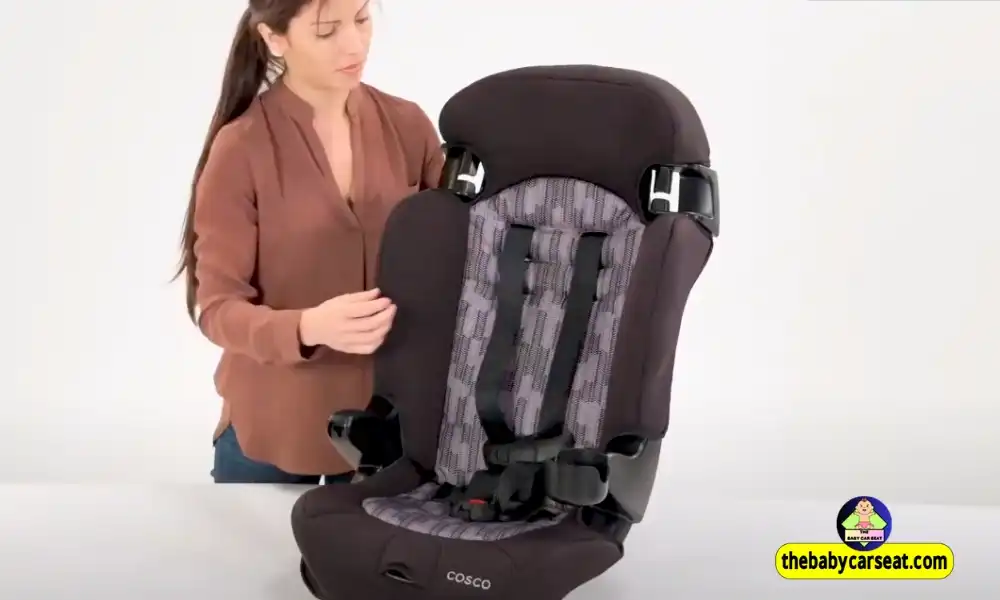When Do Babies Face Forward in Car Seat – Babies can face forward in a car seat when they reach a certain age and weight. It’s crucial to know when it’s safe to make this change for your child’s safety.
Car seat safety is a top concern for parents. Knowing when to switch your baby to a forward-facing car seat is vital. Babies start in a rear-facing seat, which offers better protection for their developing bodies. But as they grow, parents often wonder when to make the switch.
Moving to a forward-facing seat too early can be risky. Understanding the guidelines and recommendations helps ensure your child is both safe and comfortable during car rides. This blog will provide you with clear insights and guidelines on when it is appropriate for babies to face forward in a car seat.
Importance Of Car Seat Safety
Babies should face forward in a car seat after reaching 2 years of age or meeting the weight and height limits. Ensuring car seat safety helps protect your child in case of accidents. Always follow the car seat manufacturer’s guidelines for the best protection.
Car seat safety is crucial for your baby’s protection while traveling. Proper car seat installation can mean the difference between life and death in a crash. As a parent, you want to ensure your child is as safe as possible in the car.
Protecting Your Baby
A car seat can reduce the risk of injury by up to 71%. Babies are fragile and need extra protection. The seat absorbs impact during sudden stops or accidents. It keeps your baby secure and minimizes the risk of serious injury. Ensuring your baby faces the rear for as long as possible is vital. Rear-facing seats support the head, neck, and spine more effectively during a collision. This position distributes the crash force over the child’s body.
Legal Requirements
Laws vary by state and country, but many require rear-facing car seats until age two. Some regions mandate rear-facing seats until the child reaches a specific weight or height. It’s important to know your local laws to stay compliant. A table summarizing legal requirements in various regions can be helpful:
| Region | Minimum Age for Forward-Facing | Weight/Height Requirement |
|---|---|---|
| USA | 2 years | Weight: 30-40 lbs |
| UK | 15 months | Height: 75 cm |
| Canada | 2 years | Weight: 22-40 lbs |
Always check your car seat manual for specific guidelines. Follow these to ensure your child’s safety.
- Install the seat as per the manufacturer’s instructions.
- Ensure the harness is snug and secure.
- Check the angle of the car seat regularly.
Adhering to these guidelines can protect your baby and keep them safe on the road. “`

Credit: www.evenflo.com
Rear-facing Car Seat Benefits
Many parents wonder when it is safe to turn their baby’s car seat to face forward. Understanding the benefits of a rear-facing car seat can guide this important decision. Rear-facing car seats offer significant protection for young children and can reduce the risk of injury in the event of a crash.
Enhanced Protection
Rear-facing car seats provide enhanced protection for your baby’s head, neck, and spine. In a rear-facing position, the car seat cradles these critical areas. This support helps to distribute the force of a collision more evenly, reducing the potential for serious injuries.
Reducing Injury Risks
Using a rear-facing car seat can significantly reduce injury risks. According to safety experts, keeping children in rear-facing seats up to age two, or even longer, can decrease the likelihood of injury. Here are some key points:
- Spine Protection: The seat supports the spine in a crash.
- Head Safety: The head is less likely to be thrown forward.
- Crash Force Distribution: Forces are spread over a larger area of the body.
In summary, rear-facing car seats play a crucial role in protecting young children and minimizing injury risks during car travel.
When To Transition To Forward-facing
Parents often wonder when it’s safe to move their child to a forward-facing car seat. The transition is a big step in a child’s journey. Ensuring safety is crucial. This section will guide you through the recommended age, weight, and height considerations.
Recommended Age
Pediatricians advise that children should remain in rear-facing car seats until at least the age of 2. Keeping your child rear-facing as long as possible is the safest option. Some car seats are designed for children up to 3 or 4 years old in the rear-facing position.
Weight And Height Considerations
Besides age, weight and height are key factors in deciding when to transition. Rear-facing car seats typically support children up to 40 pounds. Always check the specific limits of your car seat model.
| Car Seat Type | Weight Limit | Height Limit |
|---|---|---|
| Infant Car Seat | Up to 30 lbs | Up to 32 inches |
| Convertible Car Seat | Up to 40 lbs (rear-facing) | Up to 40 inches |
| Forward-Facing Car Seat | Up to 65 lbs | Up to 49 inches |
Once your child exceeds the rear-facing weight or height limit, it’s time to switch. Ensure your child meets the minimum weight and height requirements for a forward-facing seat.
- Check the car seat manual for specific guidelines.
- Keep your child in the rear-facing position as long as possible.
- Ensure proper installation of the car seat.
Signs Your Baby Is Ready
Knowing when to switch your baby to a forward-facing car seat is crucial. Several signs indicate your baby is ready for this transition. This ensures their safety and comfort during car rides.
Physical Development
Your baby’s physical growth is a key sign. They should meet the minimum weight and height requirements set by the car seat manufacturer. Typically, this happens around age 2.
Check the car seat manual for specific guidelines. Most babies are ready once they weigh at least 20 pounds and are 30 inches tall. These measurements ensure they can safely handle the forward-facing position.
| Age | Weight | Height |
|---|---|---|
| 2 Years | 20 Pounds | 30 Inches |
Comfort And Fit
Comfort is another important factor. Ensure the car seat provides a snug fit. The harness should rest comfortably on their shoulders without pressing too hard.
Check if your baby sits comfortably with their back against the seat. Their knees should bend naturally at the seat edge.
Ensure that the seat provides adequate head and neck support. This is crucial for safety during sudden stops or accidents.
- Check harness fit
- Ensure natural knee bend
- Check head and neck support
By observing these signs, you can determine the best time to switch your baby to a forward-facing car seat. Ensure their safety and comfort for every journey.
Choosing The Right Forward-facing Seat
Choosing the right forward-facing car seat for your baby is crucial. It ensures safety and comfort during travel. There are various factors to consider before making a purchase. Among the most important are safety ratings and key features. Let’s dive into these aspects to help you make an informed decision.
Safety Ratings
Safety ratings are essential when selecting a car seat. They indicate how well the seat performs in crash tests. The National Highway Traffic Safety Administration (NHTSA) provides ratings for car seats. Look for seats with high ratings. They offer the best protection for your child.
Another reliable source is the Insurance Institute for Highway Safety (IIHS). They also test and rate car seats. These ratings help parents choose the safest option. Always check these ratings before purchasing a seat.
Features To Look For
When choosing a forward-facing seat, consider key features. These features enhance safety and convenience. Below are some features to look for:
- 5-Point Harness: Offers better restraint and distributes force during a crash.
- Adjustable Headrest: Provides comfort and grows with your child.
- Side-Impact Protection: Extra padding that protects in side collisions.
- Easy Installation: Ensure the seat is easy to install correctly.
- Comfort Padding: Keeps your child comfortable during long rides.
Below is a table summarizing key features to consider:
| Feature | Benefit |
|---|---|
| 5-Point Harness | Better restraint and force distribution |
| Adjustable Headrest | Grows with your child |
| Side-Impact Protection | Extra padding for side collisions |
| Easy Installation | Correct installation ensured |
| Comfort Padding | Comfort during long rides |

Credit: www.safewise.com
Proper Installation Techniques
Ensuring your baby’s car seat is installed correctly is crucial. Proper installation keeps your baby safe while driving. Here are some techniques to ensure the car seat is properly installed.
Securing The Seat
First, make sure the car seat fits your vehicle. Check the car seat manual and your vehicle’s manual. They provide specific instructions. Use either the LATCH system or the vehicle’s seat belt. Not both.
For the LATCH system, attach the lower anchors to the vehicle’s anchors. Pull the straps tight. Ensure there is no slack. If using the seat belt, thread it through the correct path. Lock the seat belt by pulling it all the way out, then letting it retract.
Press down on the car seat. Tighten the seat belt or LATCH straps. The car seat should not move more than an inch. Check this at the belt path.
Harness Adjustments
The harness keeps your baby secure in the car seat. Ensure it is at the correct height. For rear-facing, the harness should be at or below the baby’s shoulders. For forward-facing, it should be at or above the shoulders.
Adjust the harness so it is snug. You should not be able to pinch any harness material at the baby’s shoulders. This is called the pinch test. The chest clip should be at armpit level. This keeps the harness in the right position.
| Installation Method | Steps |
|---|---|
| LATCH System |
|
| Seat Belt |
|
Common Mistakes To Avoid
Properly using a car seat is crucial for your baby’s safety. But, many parents make mistakes when transitioning their baby to a forward-facing position. Here are some common mistakes to avoid to ensure your baby’s safety during car rides.
Incorrect Positioning
One of the most common mistakes is incorrect positioning of the car seat. Make sure the seat is installed at the right angle. An incorrect angle can cause discomfort or even injury. Follow the manufacturer’s instructions carefully. Use the level indicators on the car seat to ensure proper installation. Always place the car seat in the back seat of the vehicle.
Loose Straps
Another frequent mistake is using loose straps. Loose straps can make the car seat less effective in a crash. Always ensure the straps are snug and properly adjusted. Use the pinch test: pinch the strap at your baby’s shoulder. If you can pinch any fabric, the strap is too loose. Adjust the straps so they lie flat and do not twist. Make sure the chest clip is at armpit level. This helps keep the straps in place and provides better protection.
| Common Mistake | How to Avoid |
|---|---|
| Incorrect Positioning | Follow manufacturer’s instructions and use level indicators. |
| Loose Straps | Perform the pinch test and adjust straps to fit snugly. |
Ensuring proper car seat use can significantly enhance your baby’s safety. By avoiding these common mistakes, you can provide the best protection for your little one.

Credit: www.maxi-cosi.com
Expert Safety Tips
Ensuring your baby’s safety in the car is crucial. Expert safety tips can help you make informed decisions about when to switch your baby’s car seat to face forward. Following these tips can give you peace of mind and protect your little one on every trip.
Professional Inspections
Many parents may not know if their car seat is installed correctly. Professional inspections can ensure your car seat is secure and safe. Certified technicians can check the installation. They can also provide guidance on the best practices for your child’s specific car seat model.
Here is a table showing common inspection sites:
| Inspection Site | Contact Information |
|---|---|
| Fire Stations | Local phone number or website |
| Police Stations | Local phone number or website |
| Children’s Hospitals | Local phone number or website |
Continuous Monitoring
Continuous monitoring of your baby’s growth and development is essential. Babies grow quickly, and so do their safety needs. Regularly check the car seat’s weight and height limits.
Consider these points for continuous monitoring:
- Weigh your baby at regular intervals.
- Measure your baby’s height frequently.
- Check the car seat’s manual for weight and height limits.
Keeping track of these details helps ensure your baby remains safe.
Frequently Asked Questions about When Do Babies Face Forward in Car Seat
When Can Babies Face Forward In Car Seats?
- Babies can face forward in car seats typically after they turn 2 years old. It’s crucial to follow your car seat manufacturer’s guidelines and local laws.
What Is The Safest Age For Forward-facing Seats?
- The safest age for forward-facing seats is generally around 2 years old. Always consult your car seat’s manual and adhere to safety recommendations.
Are Rear-facing Car Seats Safer For Babies?
- Yes, rear-facing car seats are safer for babies. They provide better protection for the baby’s head, neck, and spine during crashes.
How Do I Know When To Switch Car Seats?
- You should switch car seats when your child outgrows the height or weight limits of their current seat. Check the manufacturer’s instructions for specific guidelines.
Conclusion
Transitioning a baby to a forward-facing car seat is a big step. Following the guidelines ensures safety. Always check your car seat manual for age and weight limits. Consult your pediatrician if unsure. Safety should always come first. Proper installation and use are key.
Keep an eye on your child’s growth. Adjust as needed. This simple care helps protect your baby on every journey. Remember, safety is a continuous process. Happy and safe travels!

